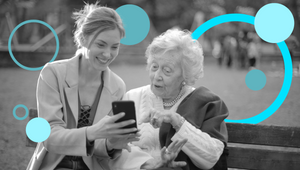
The Music Experience Is Evolving

Image credit: Austin Neill via Unsplash
For decades, music evolved through formats: vinyl, tape, CD, MP3, stream. Each one changed the way we accessed sound.
Then came music videos. Then came social. Then came short-form. And now, we’re entering something different entirely:
The evolution of listening formats is also a story of the evolution of how we experience music. Vinyl brought music into our homes at a large-scale. Tapes allowed us to easily bring music with us wherever we went, and CDs gave way to the rise of the single. MP3s digitised music, music videos created aesthetic and social gave us connection.
Each of these new formats changed our personal experience of music but they all were dependent on sound to make their impact.
Today we’re seeing the rise of a new format- Spatial. Where you can not only listen, you can interact, embody, personalise and fully immerse yourself in the music.
A world where music is no longer just heard—it's inhabited.
The Spatial Turn in Music
For years, artists and platforms have experimented with virtual performances and livestreamed concerts. But what’s emerging now is a distinctly spatial format—one where music and performers interact with the listener’s environment, mood, and movement.
Mixed reality makes it possible to transform everyday spaces into responsive, reactive stages. Through spatial audio, real-time visual effects, and AI-driven scene adaptation, any environment can become a dynamic music venue—one that evolves in sync with the artist’s expression and the audience’s input.
Unlike traditional VR, mixed reality (MR) blends content with your world. The walls of your house can pulse with rhythm. A performer can appear life-size in your living room. Music becomes a shared dimension—not a screen.
This new medium is not just immersive. It’s personal. It’s participatory. And it’s persistent.
The Rise of the Participatory Fan
Fandom has never been passive. But with all of the tools available at their disposal, there is increasing expectation from today’s fans to play, remix, move, and express themselves within the music in novel ways. Mixed reality makes that possible.
In spatial experiences, fans can sing to trigger visual effects, move to generate lighting trails, or use gestures to interact with artists’ avatars. These aren’t gimmicks—they’re meaningful, expressive acts that strengthen the emotional bond between artist and audience.
We’re seeing this trend emerge in early formats: music-driven AR games, collectible digital merch, and real-time co-performance features. As form factors improve and the hardware becomes more ambient, these kinds of interactions will become a baseline expectation.
Why Now?
The hardware is improving. The toolsets are maturing. But most importantly—audiences are ready.
We’ve entered an era where fandom is 24/7 and participatory. Fans want deeper connection, more story, and ways to express identity. Mixed reality delivers all three, while maintaining one crucial element: proximity.
It’s one thing to stream a song. It’s another to feel it step into your space, respond to your mood, and evolve over time.
We can’t wait to be a part of it.












